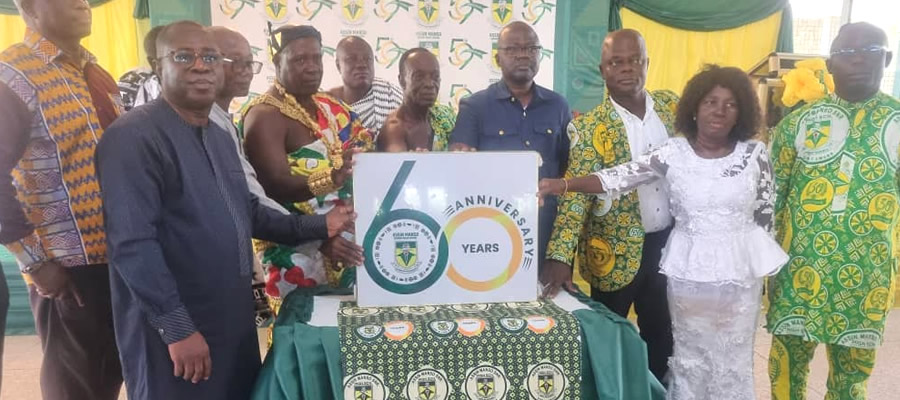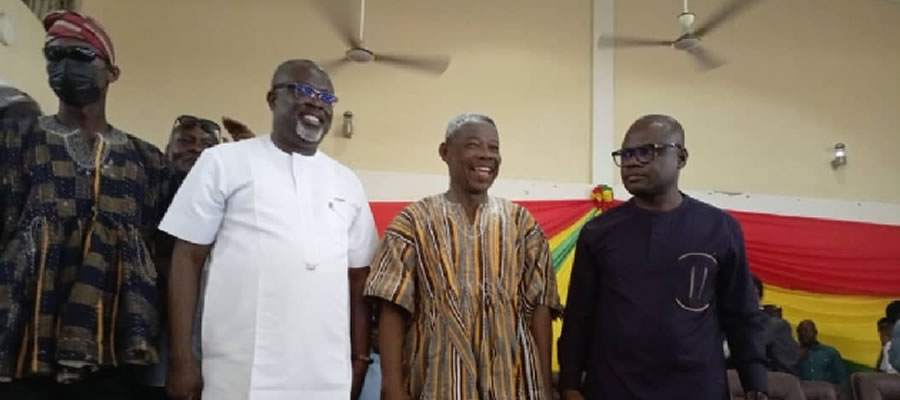

In terms of education, in the 2006/2007 academic year, the district has 85 Pre-schools, 103 Primary Schools, 73 Junior Secondary Schools, 4 Senior Secondary Schools and 1 Teacher Training College. The teacher - pupil ratios of public pre-school, primary, Junior Secondary Schools, Senior Secondary Schools, and Teacher Training Colleges were found to be 1:55, 1:43, 1:24, 1:24 and 1:14 respectively. The ratios for the pre-schools and primary are above the national ratios of 1:45, 1:35. These figures show that quite a number of school going age children are attending school yet the number of teachers are inadequate.
During the period in question, of the 1,670 teachers in the Municipality, 65 per cent were trained teachers and 35 per cent are untrained teachers. Apart from the nursery schools which have a higher percentage of untrained teachers (78 per cent), for primary and Junior Secondary Schools, trained teachers constituted a higher percentage, 58 per cent and 70 per cent respectively as against 42 per cent and 30 per cent untrained teachers. The performance of the educational system is affected among other things by the relatively large number of untrained teachers who are currently employed in schools.
This has clear implications for the quality of instruction. This suggests the need for in-service training for teachers. Perhaps, the qualities of teachers have contributed to the average performance of pupils in B.E.C.E. In 2005, the percentage passed was 41.7. This could be compared to 49 per cent obtained in 2006. All necessary measures must be put in place to improve the performance of pupils at B.E.C.E. In terms of enrolment, in the 2006/2007 academic year, the district had a total of 85 nursery schools with an enrolment of 8,481,103 primary schools with enrolment of 24,743, and 73 Junior Secondary Schools with an enrolment of 8,839 students.
These schools are evenly distributed in the Municipality, compared to the Senior Secondary schools (S.S.S) where there are only 2 public schools in the Municipality, which are located at Assin Foso, and Assin Praso. In addition to the S.S.S, the Assembly has one Teacher Training College in Assin Foso The educational status of the population showed that about 66 per cent of the population have attained formal education up to primary level, 7 per cent up to secondary level, 3 per cent up to tertiary level, and 24 per cent have had no formal education.
With this situation, the illiteracy rate is estimated to be 60 percent. This figure is comparatively higher as against the 46.9 per cent acceptable rate for the country. As a result, the educational level of the population is quite low which does not auger well for development, since development is education-driven. The National Vocational Technical Institute (M.V.T.l) at Foso may be the only avenue for acquiring formal technical skills .This is inadequate and leaves most Junior Secondary School leavers with no skill for job acquisition or self-employment.
The physical state of most of the school buildings especially the primary schools and J.S.S are not in good condition. Supportive facilities like water and toilet, and equipment is inadequate and in some places even completely lacking. In the case of J.S.S, majority of them do not have workshops, while those that have do not have the necessary facilities for run them. The European Union, the GETFUND, and the H.l.P.C Relief Fund have constructed J.S.S and primary school blocks for the Municipality. The Assin North Assembly of urgency needs to rehabilitate some of the deplorable schools in the Municipality.
The Municipality currently has a total of 307 schools from basic to tertiary and 133 (43.3%) are in the public sector, and 174 (56.7%) are in the private sector as shown in the table below.
NUMBER OF SCHOOLS BY PUBLIC AND PRIVATE SECTORS
Source: GES-Municipal Education Office, Assin Fosu. C/R (AUGUST, 2022)
ENROLMENT
The teacher pupil ratio in Public Pre-School, Primary, Junior High School, Senior High Schools and Teacher Training College shows that pre-school and primary are above the national ratio of 1:54. Female enrolment from Pre-School to S.H.S is also slightly lower than that of males as shown in the table above indicating that some inroads must be made in the Girl-Child Education Policy.
Date Created : 4/22/2025 8:28:14 AM











 facebook
facebook
 twitter
twitter
 Youtube
Youtube
 +233 593 831 280
+233 593 831 280 0800 430 430
0800 430 430 GPS: GE-231-4383
GPS: GE-231-4383 info@ghanadistricts.com
info@ghanadistricts.com Box GP1044, Accra, Ghana
Box GP1044, Accra, Ghana